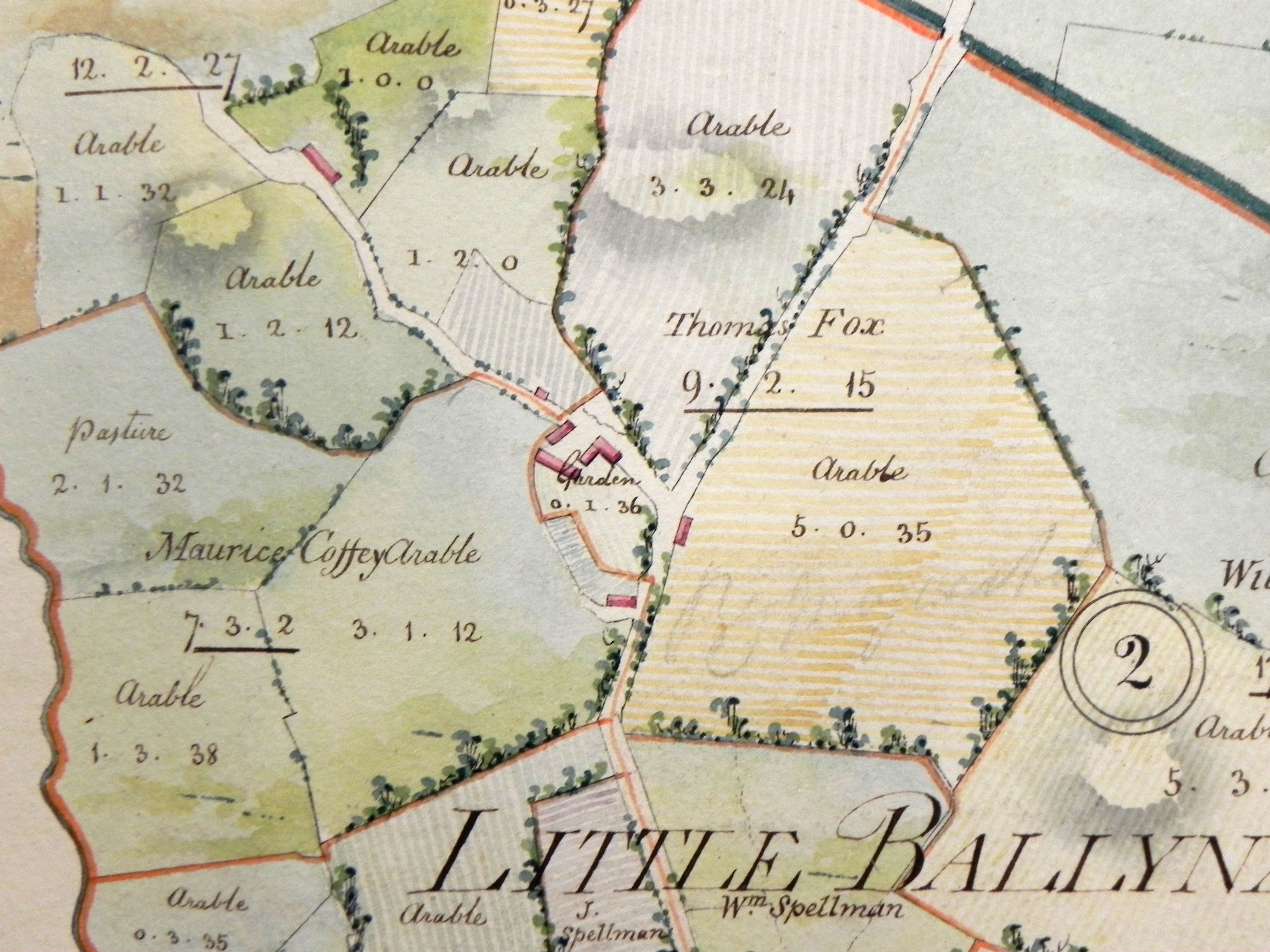Tithe applotment records
Title Applotment Books
A tithe was one tenth of the produce of agricultural land levied for the support of the official, state-established Church of Ireland and its clergymen. Under the Tithe Composition (Ireland) Act, 1823, this was converted into a monetary tax and the Tithe Applotment Books were compiled at various dates between 1823 and 1837 for the purpose of assessing the amount of this tax that occupiers of agricultural holdings above one acre should pay in tithes to the Church of Ireland.
There is a manuscript book for almost every parish in the country, giving the names of occupiers, the amount of land held, and the sums to be paid in tithes.
The original books are held in the National Archives and can be consulted on microfilm only in the reading room, or can be searched free of charge on our Genealogy website. Basic surname searches of the website will yield results identifying the townland, parish and county in which the name appears in the Tithe Applotment Books.
A list of the Tithe Applotment books, arranged by Church of Ireland parish, is available in the reading room. The books for the six counties of Northern Ireland are held in the Public Record Office of Northern Ireland (PRONI) in Belfast, but microfilm copies are held in the National Archives.
Tithe Defaulters lists
Tithes were a tax levied on all occupiers of agricultural land regardless of their religious affiliation. Payment of tithes was bitterly resented, particularly by the Roman Catholic population, which also had to support their own priests. In the years 1831 to 1832, many people began to refuse to pay tithes and so began the ‘Tithe War’, which was fiercest in Leinster and Munster.
The Clergy Relief Fund was established in 1832 under the Recovery of Tithes (Ireland) Act, 1832 to assist affected Church of Ireland clergy affected by the non-payment of tithes. The clergy made returns to government of the names of people who refused to pay tithes in order to receive compensation for unpaid tithes. Some of these returns survive in the form of schedules of recording the names of approximately 29,000 tithe defaulters and form part of the archives of the Office of the Chief Secretary. The schedules list the defaulter’s address and the sum due. Some also list the defaulter’s landholding and occupation. Details of clergy who applied for financial relief under the fund can be found in ‘The Clergy Relief Fund, 1831: tithe defaulters’ by Suzanne C Hartwick in The Irish Genealogist, vol. 8, 1990. The original schedules of defaulters are held in the National Archives under reference CSO/OPMA/156/2/32–37.
